
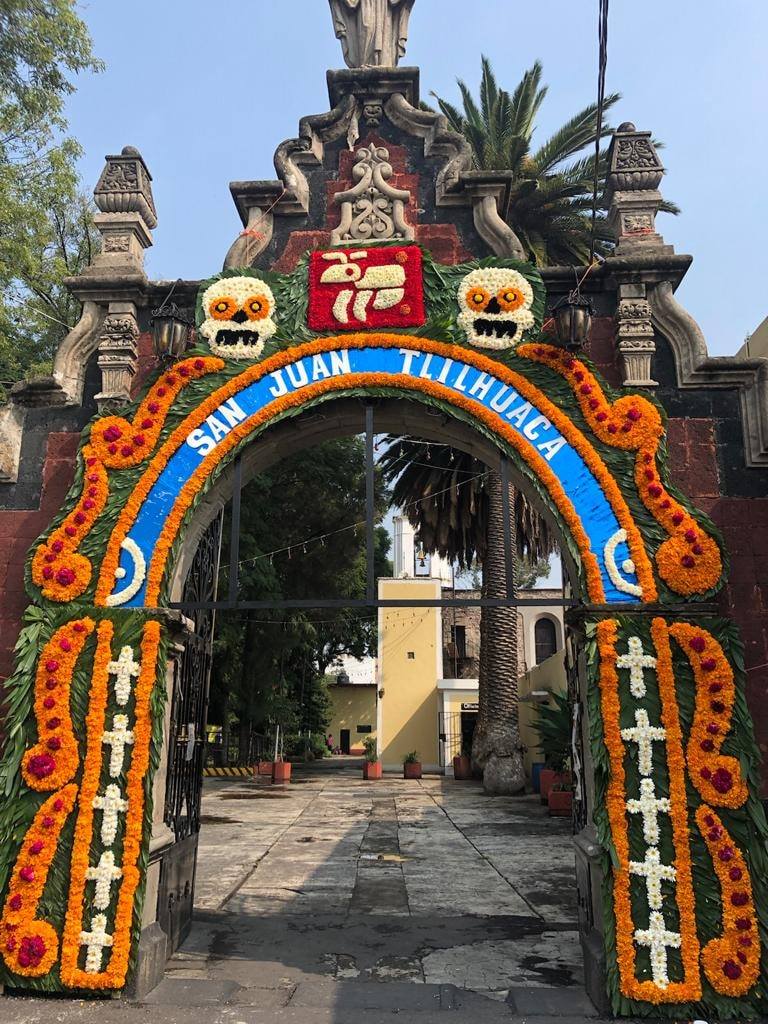
San Juan Tlilhuaca is one of the 25 original settlements of Azcapotzalco. The crooked streets here rather perfectly interrupt Azcapotzalco’s grid of streets, reminding visitors that it’s a very old town. Tlilhuaca is from the Náhuatl, meaning “where the black is,” and refers to the town’s traditional reputation as a center of witchcraft and black magic. See below for some of the legends of the town.
As a place to visit, the great age of the neighborhood will be apparent to the observant visitor. This is true even despite the relative youth of many of the buildings. The narrow streets, the externally unadorned marketplace, and the constant flutter of overhead papelitos make it a trip into some of Mexico City’s most traditional territory.
The catalog of the National Institute of Anthropology and History (INAH) notes that the temple is dedicated to both Saint John the Apostle and Saint John the Baptist. There was an older chapel dedicated to the Virgin Mary, and this was built in the then-famous neighborhood called Ahuehuetes.
The fame of the area was tied to an enchanted spring from which no one could drink. A priest urged the early parishioners to pour earth and stone into the spring until it was covered in the belief that the “evil one” lived there. This was said to be the end of the enchantment of the Ahuehuetes area.
When the Dominicans arrived, two wooden chapels were built. One was for the Tepanecas (that of John the Baptist) and another for the Mexica people (that of John the Evangelist). The viceroy ordered that both saints be honored in a single temple.
The oldest part of the current church dates from the 17th century and replaced a wooden building from the 16th century. The original church included a chapel, a rectory and a school. At the end of the 16th century, Viceroy Alvaro Manrique ordered the demolition of the old building. The new church included a carved stone façade and flattened stone walls. This was topped with with a vaulted roof and a circular dome.
The giant, leaning Ahuehuete trees still hold a place in the legends and lore of the neighborhood. These are said to have been planted by the Tepeneca people when they first arrived on the edge of Lake Texcoco. They planted seven trees to represent the ancestors they’d carried with them from their original homes in today’s Michoacán.
The new home was thereafter known as Ahuehuetitlán, today’s San Juan Tlilhuaca. Tezozómoc, the famed ruler and longtime enemy of the Mexica (of Tenochtitlan), was said to beautify his cities with the trees, believed to provide not just shade, but protection, and for many.
 +525555615817
+525555615817
 https://www.facebook.com/sanjuanbautistatlilhuaca/
https://www.facebook.com/sanjuanbautistatlilhuaca/

Nearest at 0.20 kms.

Nearest at 0.58 kms.

Nearest at 0.92 kms.
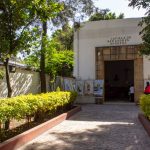
One of Azcapotzalco's nearly lost original settlements . . .
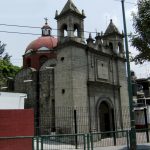
One of Azcapotzalco's ancient neighborhoods is remembered in a stone chapel.
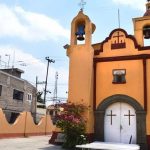
The chapel dedicated to San Andrés Apóstol dates from the 17th century.
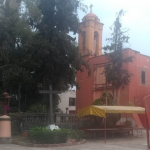
The ancient neighborhood was sacred to the Tepanec people, the chief rivals to the Mexica of Tenochtitlan.
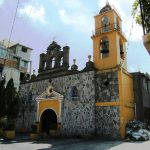
A crooked town center to one of Azcapotzalco's oldest settlements...